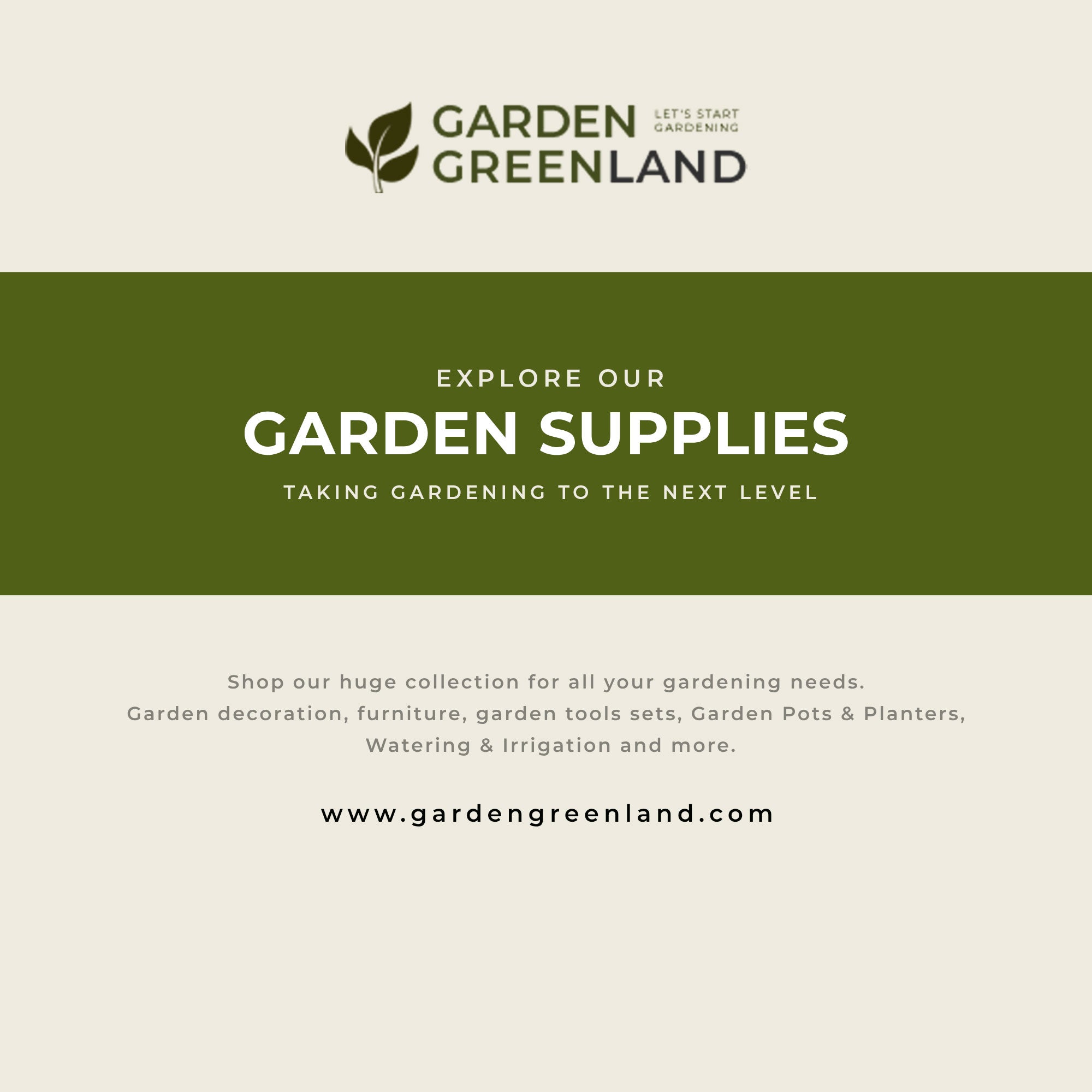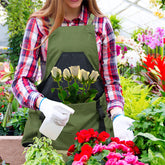What Size Grow Bag for Lettuce: Elevating Your Greens with the Right Choice
Table of Contents
- Introduction
- Understanding Grow Bag Sizes for Lettuce
- Benefits of Using Grow Bags for Gardening
- Tips for Successful Lettuce Cultivation in Grow Bags
- Conclusion
- FAQ
Growing lettuce can be a rewarding experience, whether you’re a seasoned gardener or just starting your green journey. The vibrant colors and fresh flavors of homegrown lettuce not only enhance your meals but also connect you to the earth in a profound way. However, choosing the right size grow bag for your lettuce can significantly influence your gardening success. At Garden Greenland, we believe that everyone deserves to look and feel connected to nature, and our mission is to provide you with the tools and knowledge to achieve that.
In this blog post, we will explore the topic of grow bag sizes specifically tailored for growing lettuce. We’ll dive deep into the factors to consider when selecting the right size, the benefits of using grow bags, and how to optimize your growing experience. By the end of this article, you’ll have a comprehensive understanding of what size grow bag is best for your lettuce and how to implement effective growing practices.
Introduction
Did you know that lettuce is one of the fastest-growing vegetables, often ready to harvest within just a few weeks? This crisp, nutritious plant thrives in a variety of conditions, making it perfect for container gardening. However, the success of your lettuce crop hinges not only on choosing the right seeds and soil but also on selecting the appropriate container.
As we embark on this exploration of grow bags and their sizes, we’ll consider how these choices impact the health and yield of your lettuce. With our commitment to quality and customer satisfaction at Garden Greenland, we aim to empower you with the best practices and premium gardening products that facilitate a thriving garden.
This post will cover the following key areas:
- The importance of grow bag size for lettuce
- Recommended sizes for different types of lettuce
- Benefits of using grow bags for gardening
- Tips for successful lettuce cultivation in grow bags
- Frequently asked questions about grow bag gardening
Let’s dive into the world of grow bags and discover how the right size can elevate your lettuce-growing experience.
Understanding Grow Bag Sizes for Lettuce
Importance of Grow Bag Size
When it comes to growing lettuce, the size of your grow bag plays a crucial role in the plant's ability to thrive. Lettuce has relatively shallow roots, which means it doesn’t require as much depth as other vegetables. However, providing adequate space for the roots to spread and access nutrients is essential for optimal growth.
Choosing the right bag size can prevent issues such as root binding, nutrient deficiencies, and poor drainage. A grow bag that is too small will limit your lettuce's growth potential, while a bag that is too large can lead to excess moisture retention, which is detrimental to your plants.
Recommended Sizes for Different Types of Lettuce
Lettuce varieties fall into two main categories: leaf lettuce and head lettuce. Understanding the specific needs of each type will help you select the appropriate grow bag size.
- Leaf Lettuce: This variety is known for its loose, leafy structure and is typically harvested by cutting the outer leaves while allowing the inner leaves to continue growing. For growing leaf lettuce, we recommend using a 5-gallon grow bag. This size provides ample space for multiple plants, allowing you to grow several heads in one bag.
- Head Lettuce: Unlike leaf lettuce, head lettuce forms a dense, compact head. This type requires a bit more space to grow effectively. We suggest using a 10-gallon grow bag for head lettuce. This size allows for better root expansion and ensures your plants have enough nutrients and water to develop fully.
Quick Reference Table for Lettuce Grow Bags
| Type of Lettuce | Recommended Grow Bag Size |
|---|---|
| Leaf Lettuce | 5 gallons |
| Head Lettuce | 10 gallons |
Providing the right amount of space ensures that your lettuce plants flourish, resulting in a bountiful harvest that you can enjoy fresh from your garden.
Benefits of Using Grow Bags for Gardening
Growing lettuce in grow bags offers several advantages that enhance the overall gardening experience. At Garden Greenland, we are passionate about helping you make informed choices that benefit both you and your plants. Here are some benefits of using grow bags for your lettuce:
1. Improved Drainage
Grow bags are typically made from breathable fabric, which allows for excellent drainage and aeration. This feature is particularly beneficial for lettuce, as it helps prevent waterlogged soil, which can lead to root rot and other issues. Proper drainage is essential for healthy root development and overall plant vitality.
2. Portability and Versatility
One of the best aspects of grow bags is their portability. You can easily move them around your garden or patio to optimize sunlight exposure or protect them from harsh weather conditions. This flexibility allows you to create the ideal growing environment for your lettuce, regardless of your space constraints.
3. Space Efficiency
For urban gardeners or those with limited outdoor space, grow bags provide an excellent solution. They can be placed on balconies, patios, or even indoors, giving you the freedom to grow your own lettuce without the need for a traditional garden bed. This space efficiency enables you to cultivate fresh produce right at home.
4. Cost-Effective
Grow bags are often more affordable than traditional pots or raised beds. They require minimal investment while offering a high return in terms of yield and satisfaction. At Garden Greenland, we offer premium quality grow bags that combine affordability with durability, ensuring you can enjoy gardening without breaking the bank.
5. Eco-Friendly Options
Many grow bags are made from recycled or eco-friendly materials, making them a sustainable choice for environmentally-conscious gardeners. Our selection of grow bags at Garden Greenland reflects our commitment to sustainability, allowing you to garden responsibly.
Tips for Successful Lettuce Cultivation in Grow Bags
Now that we’ve established the right size grow bag for your lettuce, let’s explore some tips to ensure successful cultivation. With our extensive experience in gardening, we’ve curated a list of best practices that can help you achieve a thriving lettuce crop.
1. Choose Quality Soil
Selecting the right soil mix is crucial for your lettuce's health. We recommend using a high-quality potting mix combined with organic compost. This blend provides essential nutrients while ensuring good drainage. Avoid using garden soil, as it can become compacted in grow bags and hinder drainage.
2. Watering Wisely
Lettuce requires consistent moisture, but overwatering can lead to problems. Given that grow bags drain well, be prepared to water your plants more frequently than you would with traditional pots. A good rule of thumb is to check the soil moisture regularly and water when the top inch feels dry.
3. Fertilize Regularly
To support healthy growth, it’s important to fertilize your lettuce throughout the growing season. Consider adding a slow-release fertilizer at planting time, followed by liquid fertilizers every couple of weeks. This practice replenishes the nutrients that may wash away with regular watering.
4. Monitor Sunlight Exposure
Lettuce thrives in cooler conditions, and while it enjoys sunlight, it can become stressed in extreme heat. Aim for partial shade during the hottest parts of the day, especially in warmer climates. If you’re growing indoors, place your grow bags near a window with ample light without direct, harsh sunlight.
5. Thin the Plants
If you’ve planted multiple lettuce seeds in the same grow bag, thinning is essential for healthy growth. Once your seedlings have established a few leaves, carefully remove the weakest plants to avoid overcrowding. This step allows the remaining plants to access more nutrients and space.
Conclusion
Choosing the right size grow bag for your lettuce is a pivotal step in cultivating a successful garden. By understanding the specific needs of your plants and following best practices, you can enjoy a flourishing crop that brings fresh, nutritious flavors to your table. At Garden Greenland, we are dedicated to empowering gardeners of all levels to embrace their green thumb through quality gardening essentials.
With our premium gardening products and a wealth of knowledge at your fingertips, you’re well on your way to creating a thriving lettuce garden. As you embark on this journey, remember to experiment, learn, and connect with nature. Together, we can elevate your gardening experience, one essential at a time.
FAQ
1. How many lettuce plants can I grow in a 5-gallon grow bag?
In a 5-gallon grow bag, you can comfortably grow 4-6 leaf lettuce plants or 2-3 head lettuce plants, depending on their spacing requirements.
2. Do grow bags need drainage holes?
Most grow bags are designed with excellent drainage due to their fabric construction, which allows for air circulation and excess water to escape. Therefore, additional drainage holes are generally not necessary.
3. Can I reuse grow bags for different plants?
Yes, you can reuse grow bags for different plants. However, it’s essential to clean them thoroughly and replace the soil to prevent the transfer of diseases.
4. How often should I water my lettuce in grow bags?
Watering frequency can vary based on climate and conditions, but a good practice is to check the soil moisture daily. Water when the top inch feels dry, ensuring the soil remains consistently moist but not soggy.
5. What is the best time of year to grow lettuce in grow bags?
Lettuce can be grown in cooler months, typically in the spring and fall, to avoid the heat of summer that can cause bolting. In mild climates, you can grow lettuce year-round using grow bags.
As you explore the world of gardening with us, we invite you to browse our Garden Tools Collection and Garden Equipment Collection for high-quality gardening solutions tailored to your needs. Happy gardening!









